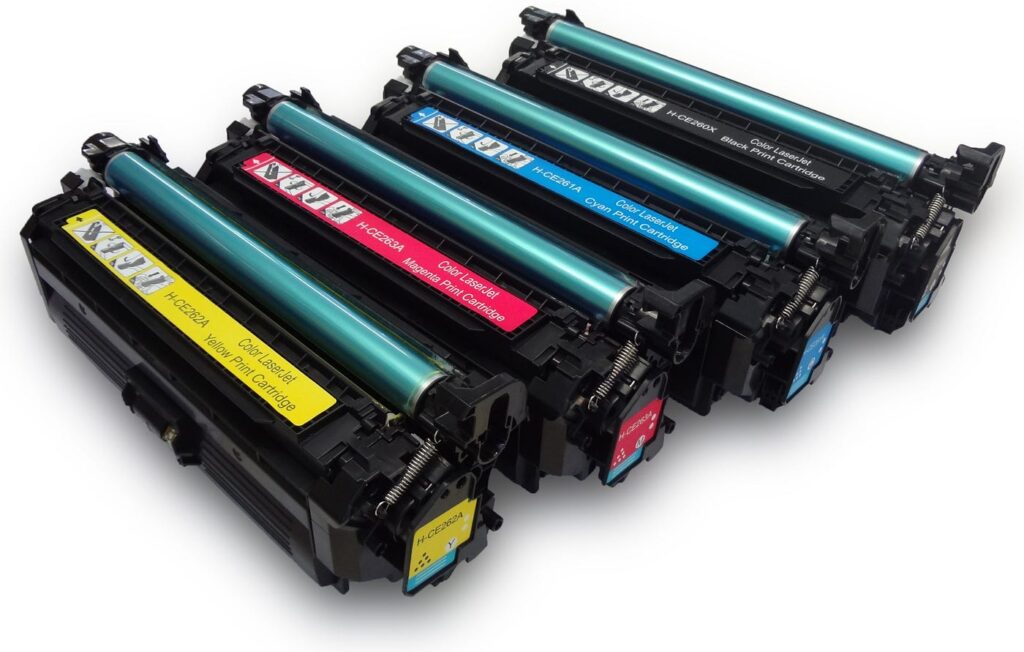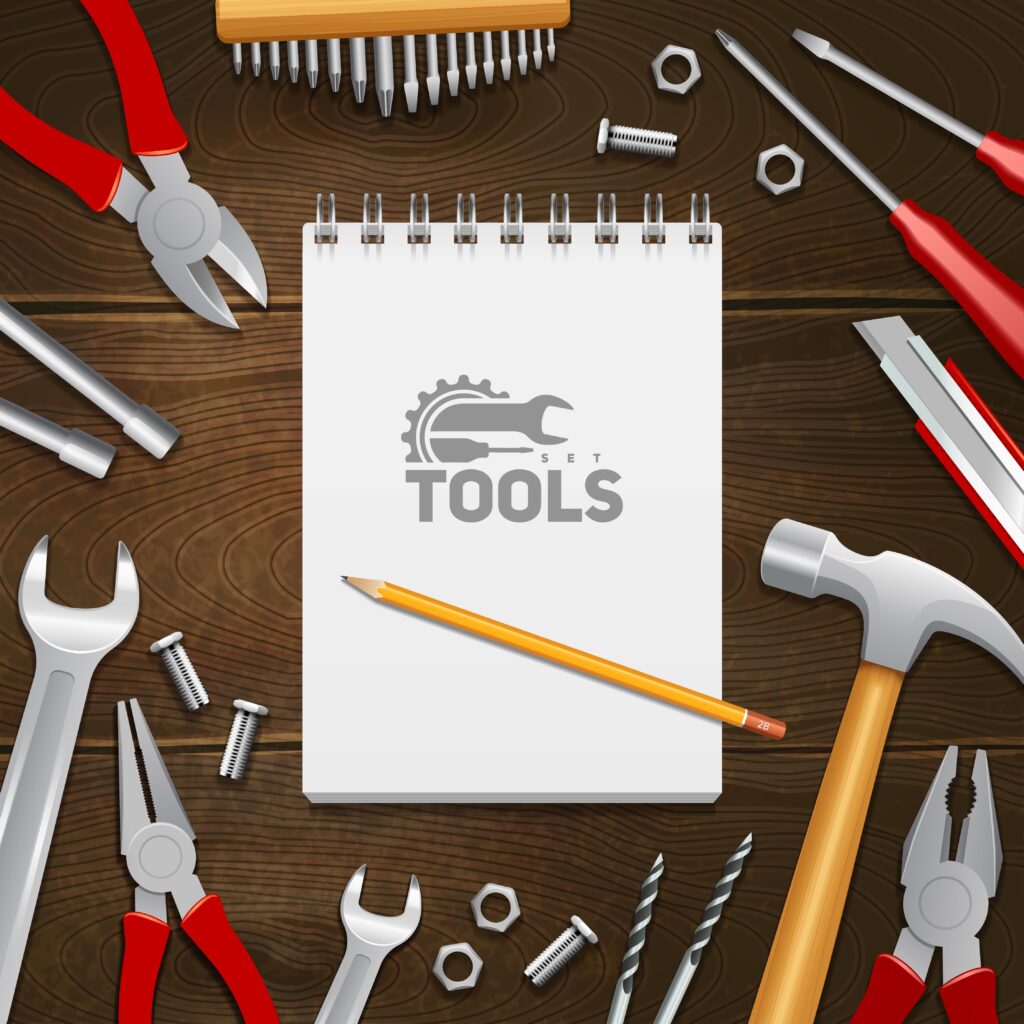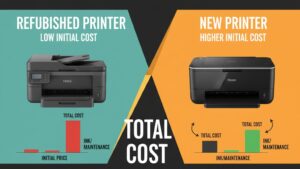If you want to make printer ink last longer and reduce your printing expenses, you’re not alone. With ink cartridges costing more per ounce than champagne, finding ways to maximize their lifespan has become essential for both home users and businesses. The average household spends over $200 annually on printer ink, making it one of the most expensive liquids we regularly purchase.
The good news is that with the right strategies and techniques, you can significantly extend your cartridge life without compromising print quality. From adjusting printer settings to proper maintenance routines, these proven methods will help you squeeze every drop of value from your ink investment while maintaining professional-looking documents and photos.
What Is Printer Ink Efficiency?
Printer ink efficiency refers to optimizing how your printer uses ink to produce documents and images while minimizing waste and maximizing cartridge lifespan. Understanding this concept involves recognizing that modern inkjet printers are designed to deliver high-quality prints, but they often use more ink than necessary for everyday printing tasks.
Ink efficiency encompasses several factors including print settings, paper quality, maintenance habits, and usage patterns. When you improve ink efficiency, you’re essentially getting more printed pages per cartridge while maintaining acceptable quality standards for your specific needs.
The key lies in understanding that different printing tasks require different approaches. Draft documents don’t need the same ink density as professional presentations, and recognizing these distinctions allows you to make informed decisions about when to conserve ink and when to use standard settings.
10 Proven Ways to Make Printer Ink Last Longer

1. Adjust Your Printer Quality Settings
The fastest way to extend printer cartridge life is by modifying your print quality settings. Most printers default to “Normal” or “High” quality, which consumes significantly more ink than necessary for everyday documents.
Switch to “Draft” or “Economy” mode for internal documents, emails, and rough drafts. These settings can reduce ink consumption by 30-50% while still producing readable text. Reserve high-quality settings for important presentations, client documents, or photo printing.
2. Choose the Right Fonts and Formatting
Your font choices directly impact ink usage. Fonts like Century Gothic, Calibri, and Times New Roman use less ink than bold, thick fonts like Arial Black or Impact. Studies show that switching from Arial to Century Gothic can reduce ink consumption by up to 30%.
Avoid unnecessary bold formatting, large font sizes, and heavy graphics in routine documents. When possible, use font sizes between 10-12 points, as smaller sizes require less ink coverage while remaining perfectly readable.
3. Print in Grayscale When Possible
Color printing consumes significantly more ink than black and white printing. Configure your printer to print in grayscale or black and white for documents that don’t require color elements. This simple change can extend your color cartridges’ lifespan by months.
Most word processors and browsers allow you to preview documents before printing, helping you identify which pages actually need color printing versus those that would work fine in grayscale.
4. Use Print Preview and Edit Before Printing
Always use print preview to avoid reprinting documents due to formatting errors, unwanted pages, or unnecessary content. Remove blank pages, excessive white space, and redundant information before sending documents to your printer.
Consider printing multiple pages per sheet when appropriate. Printing two or four pages per sheet reduces paper costs and ink usage for reference documents or draft reviews.
5. Maintain Your Printer Regularly
Regular maintenance prevents ink waste from clogged nozzles and poor print quality. Clean your printer heads monthly using the built-in cleaning function, but don’t overdo it – excessive cleaning cycles waste more ink than they save.
Keep your printer in a dust-free environment and use it regularly. Printers that sit unused for weeks often develop clogged nozzles, requiring wasteful cleaning cycles to restore proper function.

6. Store Cartridges Properly
When replacing cartridges, store unused ones in cool, dry places away from direct sunlight. Heat and humidity can cause ink to dry out or leak, reducing cartridge lifespan before you even install them.
Keep cartridges in their original packaging until needed, and avoid touching the copper contacts or print heads during installation to prevent contamination.
7. Choose Quality Paper
Using appropriate paper reduces ink absorption and bleeding, meaning you need less ink to achieve the same print quality. Cheap, porous paper absorbs more ink and produces fuzzy text that may require reprinting.
Invest in decent quality multipurpose paper for regular printing. The slight additional cost pays for itself through reduced ink consumption and fewer reprints due to poor quality results.
8. Print Regularly but Strategically
Paradoxically, printing small jobs regularly keeps your printer healthier than letting it sit unused for weeks. Infrequent use allows ink to dry in the nozzles, requiring wasteful cleaning cycles.
However, batch similar printing jobs together when possible. Printing multiple documents in one session reduces the initialization cycles that consume ink each time the printer starts up.

9. Consider Compatible or Refillable Cartridges
High-quality compatible cartridges can cost 50-70% less than original manufacturer cartridges while providing similar performance. Research reputable suppliers and read reviews before purchasing to ensure quality and compatibility.
Alternatively, consider refillable cartridge systems for high-volume printing. While the initial investment is higher, the long-term savings can be substantial for users who print frequently.
10. Use Printer Software Tools
Many printer manufacturers offer software utilities that help optimize ink usage. Canon’s Easy-PhotoPrint, HP’s Smart app, and Epson’s Print Layout tool all include features for reducing ink consumption while maintaining quality.
These tools often include features like automatic duplex printing, multiple pages per sheet, and ink-saving modes specifically designed for your printer model.

Additional Insights and Tools for Ink Conservation
Beyond basic techniques, several advanced strategies can further extend your ink supply. Consider using online tools like PrintWhatYouLike.com, which removes ads and unnecessary elements from web pages before printing, significantly reducing ink usage for online content.
Many browsers now offer “Reader Mode” or “Print-Friendly” options that strip away graphics, ads, and formatting elements, leaving only essential text. This feature alone can reduce ink consumption by 40-60% when printing web articles.
For businesses, implementing print management software can track usage patterns, set printing quotas, and automatically apply ink-saving settings across multiple devices. These solutions often pay for themselves within months through reduced supply costs.
Troubleshooting Common Ink-Wasting Mistakes
One of the biggest mistakes users make is running excessive cleaning cycles when print quality degrades. While cleaning cycles can resolve nozzle clogs, they consume substantial amounts of ink. Before running multiple cleaning cycles, try printing a few pages of regular text – sometimes this gentle exercise resolves minor clogs naturally.
Another common error is ignoring low ink warnings until cartridges are completely empty. This practice can damage print heads and require more ink-intensive cleaning procedures. Replace cartridges when they reach 10-20% capacity to maintain optimal performance.
Many users also make the mistake of storing their printer in extreme temperatures or humid environments. Garages, basements, and areas near heating vents can cause ink to dry out faster or cartridges to leak, wasting expensive supplies before they’re even used.
Avoid the temptation to remove cartridges frequently to “shake” them or check ink levels manually. Modern printers have sophisticated monitoring systems, and unnecessary handling can introduce air bubbles or contamination that reduces cartridge performance.
Finally, don’t ignore your printer’s maintenance schedule. Most modern printers include automated maintenance features that, when used appropriately, prevent more serious problems that waste significantly more ink than regular upkeep.
Frequently Asked Questions
Q: How often should I clean my printer heads to make printer ink last longer? A: Clean printer heads only when you notice print quality issues like streaking or missing colors. Monthly cleaning is sufficient for regular users, while heavy users might need bi-weekly maintenance.
Q: Do compatible ink cartridges really help extend printing costs? A: Yes, high-quality compatible cartridges can reduce costs by 50-70% while providing similar page yields. Choose reputable brands with good reviews and warranty coverage.
Q: Can I refill my own cartridges to save money? A: While possible, DIY refilling can be messy and may void your printer warranty. Professional refilling services or refillable cartridge systems are safer alternatives.
Q: What’s the best font for saving ink? A: Century Gothic, Calibri, and Times New Roman are among the most ink-efficient fonts. Avoid bold, thick fonts like Arial Black or Impact for routine documents.
Conclusion
Learning how to make printer ink last longer doesn’t require expensive equipment or complex procedures – just smart printing habits and basic maintenance. By implementing these 10 proven strategies, you can reduce your printing costs by 30-50% while maintaining the quality you need for important documents.
The key is consistency in applying these techniques and choosing the right approach for each printing task. Draft documents don’t need premium quality settings, and regular maintenance prevents costly problems down the road. Remember that small changes in your printing habits can lead to significant savings over time.
Start with the easiest changes like adjusting print quality settings and choosing ink-efficient fonts, then gradually incorporate more advanced strategies as they become routine. Your wallet will thank you, and you’ll never again face the frustration of running out of ink at the worst possible moment.
Refilled vs Original Cartridges: Complete Print Quality Test & Comparison Guide 2025 Read More.





Recent Comments